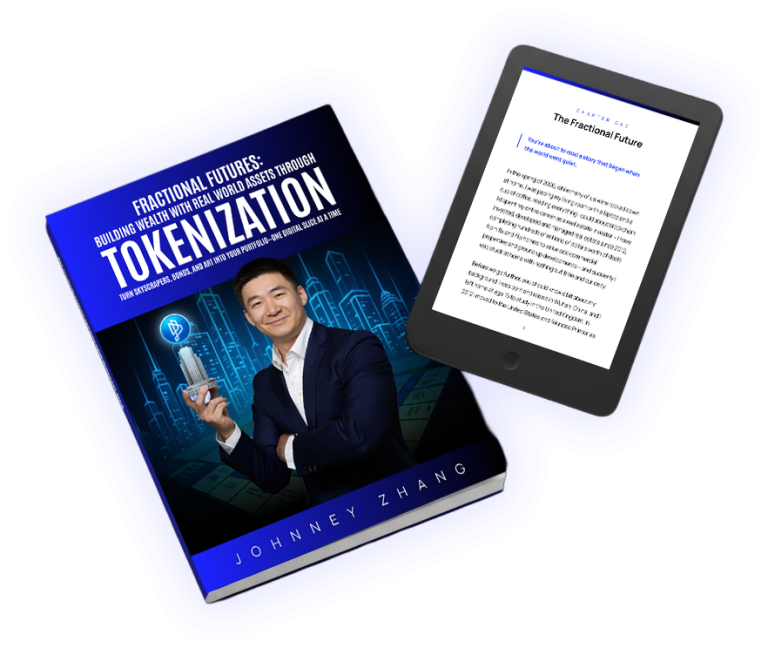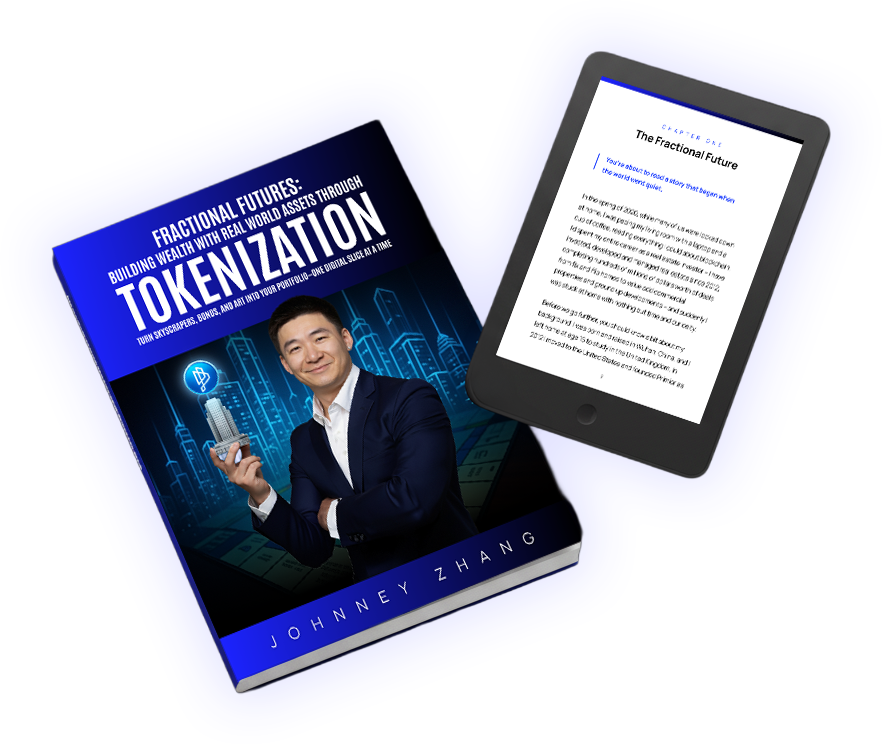Real estate tokenization is changing the investment world. Projections show growth from less than US$0.3 trillion in 2024 to US$4 trillion by 2035 — a 27% compound annual growth rate. This huge potential exists, but most property investors don’t fully grasp how this innovative approach works or what opportunities it brings.
Traditional real estate investing can limit your portfolio’s growth. Real estate tokenization uses blockchain technology to enable fractional ownership, which makes high-value properties available to more investors. A $1 million property can be split into 1,000 tokens worth $1,000 each, which creates more affordable entry points. On top of that, it makes the market more liquid and lets investors worldwide join real estate opportunities they couldn’t access before.
The advantages go beyond just making properties more available. About 58% of high-net-worth investors see lower transaction costs as their main reason to invest in tokenized assets. But regulatory uncertainty still worries investors. About 72% of institutional investors and 62% of high-net-worth investors call it a major barrier to adoption. This piece will clear up these misconceptions, explain the tokenization process, and reveal what smart investors know about this game-changing approach to real estate investment.
Why Most Investors Misunderstand Real Estate Tokenization
The rise in real estate tokenization has created confusion among investors about how this technology works. A deeper look at why 92% of property investors misunderstand this innovation shows several key knowledge gaps.
Confusion Between Tokenization and REITs
Investors often think tokenization is just a blockchain version of REITs. These investment vehicles are fundamentally different in structure. REITs turn real estate equity into securities through property portfolio companies. Tokenization converts ownership rights into digital tokens that live directly on blockchain.
This difference is crucial because tokenization represents a move from centralized to decentralized ownership. Tokenized real estate lets you trade 24/7, unlike REITs that stick to traditional stock market hours. You also get direct fractional ownership of specific properties instead of shares in a management company.
Misconceptions About Liquidity and Exit Options
The biggest misconception suggests tokenization automatically creates liquidity. Market conditions determine liquidity – it’s not built into tokenization itself. Tokenization can boost liquidity through fractional ownership and easier transfers. The actual liquidity depends on:
- Market infrastructure and secondary markets
- Overall investor demand
- Regulatory frameworks of all jurisdictions
- Platform reliability and adoption
Deloitte’s research shows only a small portion of tokenized assets have resilient secondary markets for easy trading. Limited liquidity remains a major barrier for 40% of investors looking to adopt tokenized assets.
Overestimating the Role of Blockchain Alone
Blockchain technology won’t solve every real estate investment challenge by itself. It’s one piece of a bigger puzzle. Tokenization works alongside traditional finance rather than replacing it completely.
Smart contracts are automated blockchain agreements that handle specific tasks like paying token holders. Tokenized real estate still needs proper legal frameworks, market acceptance, and trusted platforms to succeed. Blockchain provides the technical foundation, but its benefits stay theoretical without regulatory clarity and market adoption.
These insights about common misconceptions will help you approach real estate tokenization with realistic expectations and make smarter investment choices.
Breaking Down the Real Estate Tokenization Process
Real estate tokenization transforms physical properties into blockchain-based digital assets. This new approach changes how investors participate in property markets by enabling fractional ownership and better liquidity.
How Does Real Estate Tokenization Work?
The tokenization process starts when real estate is placed in a legal structure—usually a special purpose vehicle (SPV) like an LLC or trust. This entity holds the property’s title, and investors can buy tokens that represent interests in the entity. The digital tokens are then issued on a blockchain platform to create an unchangeable ownership record. Investors can start with as little as $1,000 compared to traditional real estate that needs tens of thousands.
Smart Contracts and Asset-Backed Tokens
Smart contracts are the backbone of tokenized real estate. These self-executing agreements have coded rules that enforce transaction terms automatically without middlemen. The property management becomes automated—from transferring ownership to distributing dividends. This automation makes processes smoother and cuts transaction costs, which makes tokenized real estate more appealing financially.
Custody and Legal Ownership Structures
Tokenized assets’ custody is different from traditional property ownership. Most enterprises choose trusted third parties to manage their digital assets, though self-custody remains an option. Many fintech companies and banks now provide specialized digital asset custody services in this emerging market. A neutral, third-party trust typically holds the property until any associated debt is paid off.
Investors need to understand that owning a token doesn’t mean directly owning the property. The token represents legal rights that are defined in offering documents and entity agreements, which can be enforced through contracts.
Join the Gaia Asset Tokenization waiting list by Primior here: primior.com/gaia
8 Common Misunderstandings Property Investors Have
Tokenized property investments are gaining popularity, but investors often miss crucial elements that could affect their returns. Here are eight mistakes that smart investors know to avoid:
1. Believing Tokenization Is Just a Trend
The tokenized real estate markets continue to mature, yet many investors still write this approach off as temporary. Market projections tell a different story – growth from $0.3 trillion in 2024 to $4 trillion by 2035, with a 27% compound annual growth rate. This technology reshapes ownership structures completely, rather than just adding digital features to existing systems.
2. Assuming All Tokens Are Securities
Many people think all real estate tokens work the same way. The reality shows tokens can represent different rights – from ownership and rental income to profit-sharing. Each jurisdiction treats tokenized real estate uniquely – some see them as securities, others as cryptocurrencies, or even brand new asset classes.
3. Ignoring Jurisdictional Compliance
The regulatory landscape proves complex across borders, yet property investors often miss this fact. Blockchain knows no borders, so tokens can move between jurisdictions that have very different rules. The SEC, to name just one example, usually sees tokenized real estate as securities under the Howey Test. Singapore, on the other hand, has built more straightforward frameworks.
4. Underestimating Custodial Risk
Tokenized assets need different handling compared to traditional property ownership. Self-custody remains an option, but losing access means you lose everything. Security risks go beyond the blockchain – moving assets in and out of these systems creates major weak points.
5. Confusing Token Value with Property Value
Token prices don’t always match the actual property values, though many investors think they should. While real estate token prices usually follow local house price indices, market sentiment can push them around, especially when the technology is new.
6. Expecting Instant Liquidity
Many investors assume they can trade tokens easily. The truth? “There is zero liquidity in the tokenized markets at the moment”. Trading these assets comes with challenges – secondary market activity faces strict rules unless you use registered exchanges.
7. Overlooking Tax Implications
The IRS treats digital assets as property for federal taxes, so you must report every transaction, profit or loss. Tokenized real estate can trigger multiple tax events – LLCs holding physical properties pay real estate taxes while token trades might lead to capital gains.
8. Misjudging Platform Credibility
New platforms pop up all the time, but basic due diligence remains essential. Quality real estate still matters most – “if the real estate doesn’t perform, it doesn’t matter how good your technology or compliance is”. Smart contracts make things efficient but bring new security risks as emerging technology.
What Informed Investors Do Differently
Smart investors take a unique approach to tokenized real estate. Their methods differ from beginners and lead to improved outcomes.
Evaluating Tokenized Real Estate Platforms
Smart investors put platforms with strong security features and compliance frameworks first. They examine end-to-end encryption, independent smart contract audits, and monitoring systems closely. Successful investors look at platform connections with custody providers, exchanges, and investor management tools. Security and compliance aren’t optional extras – investments face big risks without proper safeguards.
Understanding the Capital Stack in Tokenized Deals
Smart investors know how traditional capital stacks work in tokenized environments. Senior debt tokens give priority repayment rights, while mezzanine debt tokens come with higher interest rates. Equity tokens provide ownership rights. These investors look at how smart contracts handle distributions, voting rights, and compliance needs automatically.
Broadening Across Tokenized Asset Classes
Expert investors split their investments between property types of all kinds—commercial, residential, retail, and industrial. This strategy reduces risk because different sectors react differently to economic changes. They also make use of tokenization’s fractionalization to adjust portfolios often and keep their preferred mix of real estate assets.
Working with Legal and Tax Advisors
Smart investors talk to specialists before entering tokenized markets. They ask about significant tax matters, including 1031 exchanges that might apply to tokenized real estate in certain cases. They also work with cryptocurrency lawyers who understand both blockchain technology and real estate law.
Join the Gaia Asset Tokenization waiting list by Primior here: primior.com/gaia
Conclusion
Real estate tokenization leads the way in investment state-of-the-art, yet our research shows 92% of property investors don’t fully understand this game-changing approach. This piece clarifies key differences between tokenization and REITs. It tackles liquidity expectations and shows how blockchain fits into a bigger picture.
Fractional ownership through tokenization creates new chances by making high-value properties available to more investors. The path to success goes beyond technology. Investors must understand legal structures, smart contracts, and custody arrangements that back these investments.
Smart investors see these subtle differences. They assess platforms based on security and compliance. They know capital stack implications and spread their investments across tokenized asset classes. Working with specialized advisors helps them dodge pitfalls while tapping into the market’s projected 27% yearly growth.
Tokenized real estate will become crucial for sophisticated investment portfolios as regulations mature and secondary markets grow. Lower entry points, reduced costs, and better liquidity make compelling advantages for smart investors.
Tokenization isn’t just another trend – it’s a fundamental change in property ownership and transfer methods. You can join the Gaia Asset Tokenization waiting list by Primior at primior.com/gaia. This helps you keep up with trends and puts you among the informed 8% who see tokenized real estate’s true potential.
Tomorrow’s property investment belongs to those who learn these concepts today. Traditional real estate offers stability, but tokenization adds new layers of access, efficiency, and chances that smart investors can’t ignore.















